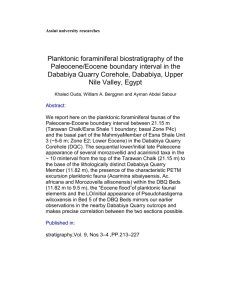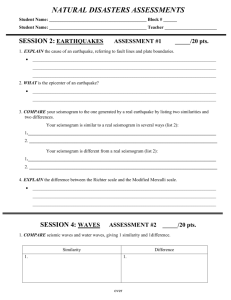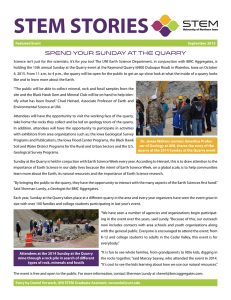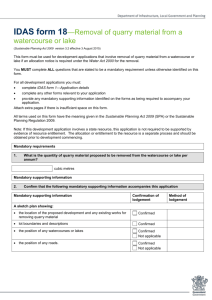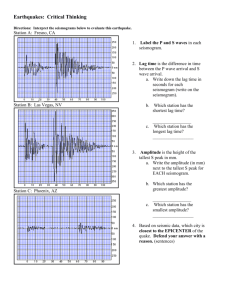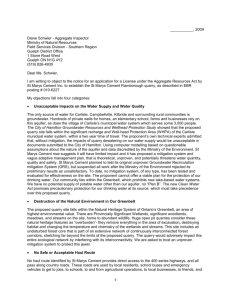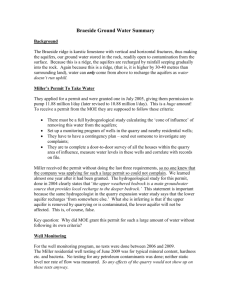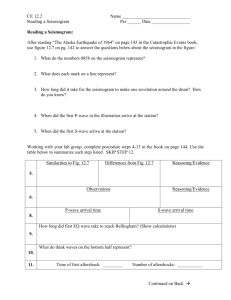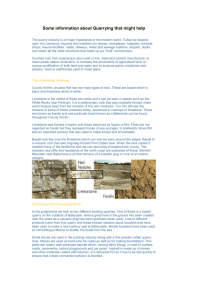Document
advertisement
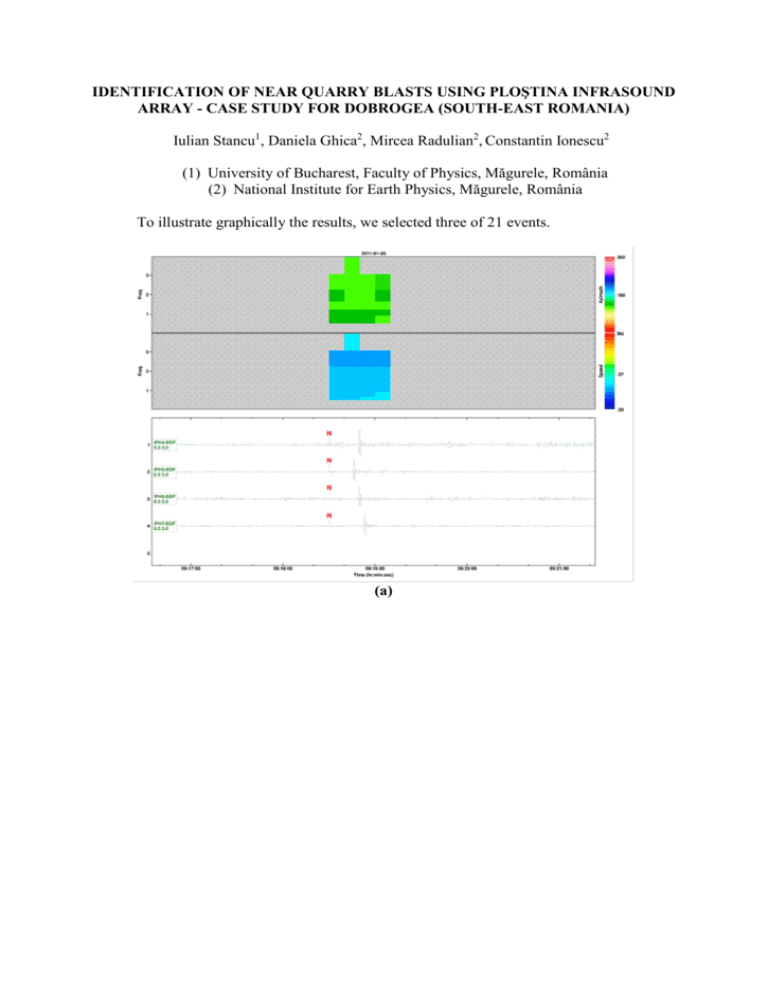
IDENTIFICATION OF NEAR QUARRY BLASTS USING PLOŞTINA INFRASOUND ARRAY - CASE STUDY FOR DOBROGEA (SOUTH-EAST ROMANIA) Iulian Stancu1, Daniela Ghica2, Mircea Radulian2, Constantin Ionescu2 (1) University of Bucharest, Faculty of Physics, Măgurele, România (2) National Institute for Earth Physics, Măgurele, România To illustrate graphically the results, we selected three of 21 events. (a) (b) (c) (d) Fig. 8. The event of January 20, 2011, 9:10:11, identified as quarry blast at Greci 2 site. The seismogram (c) is velocity vertical component at CFR seismological station. The amplitude scale in the spectrograms (b) and (d) is in nm (a) (b) (c) (d) Fig. 9. The event of 31 May 2011, 11:27:43, identified as quarry blast at Mahmudia site. The seismogram (c) is velocity vertical component at TLCR seismological station. The amplitude scale in the spectrograms (b) and (d) is in nm (a) (b) (c) (d) Fig. 10. The event of 2 August 2011, 13:50:40, identified as quarry blast at Cheia site. The seismogram (c) is velocity vertical component at TIRR seismological station. The amplitude scale in the spectrograms (b) and (d) is in nm

